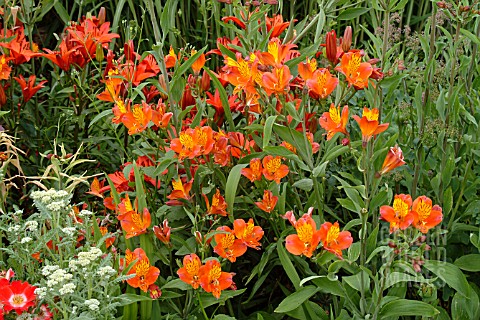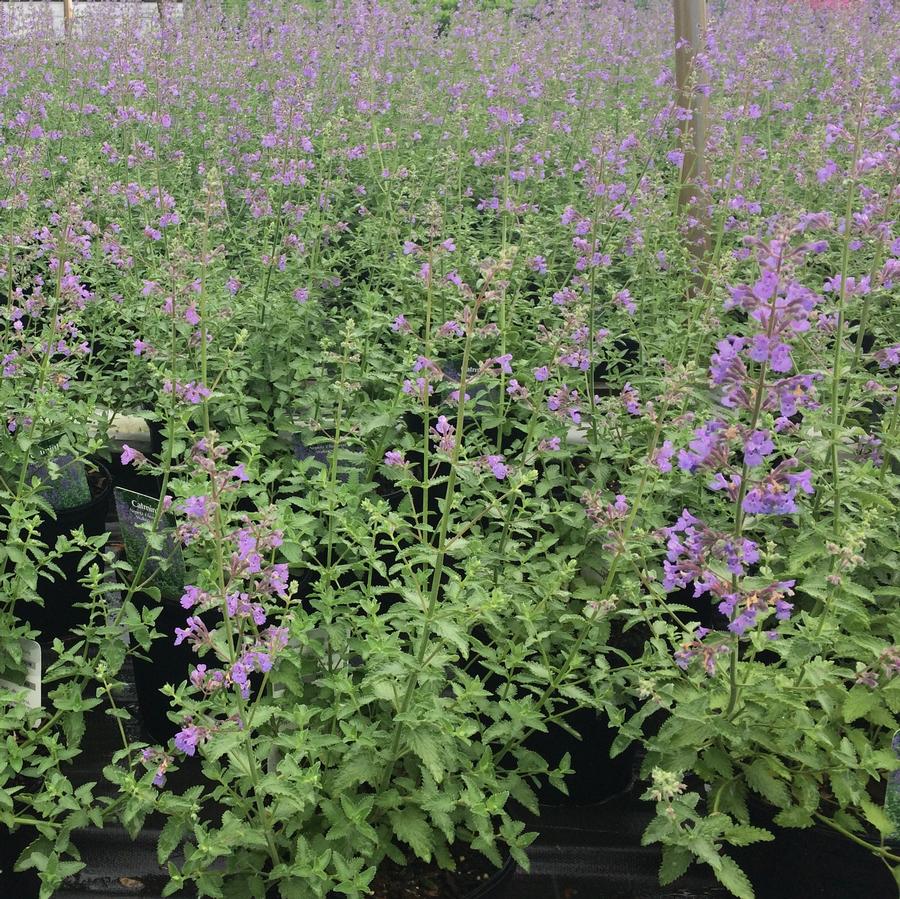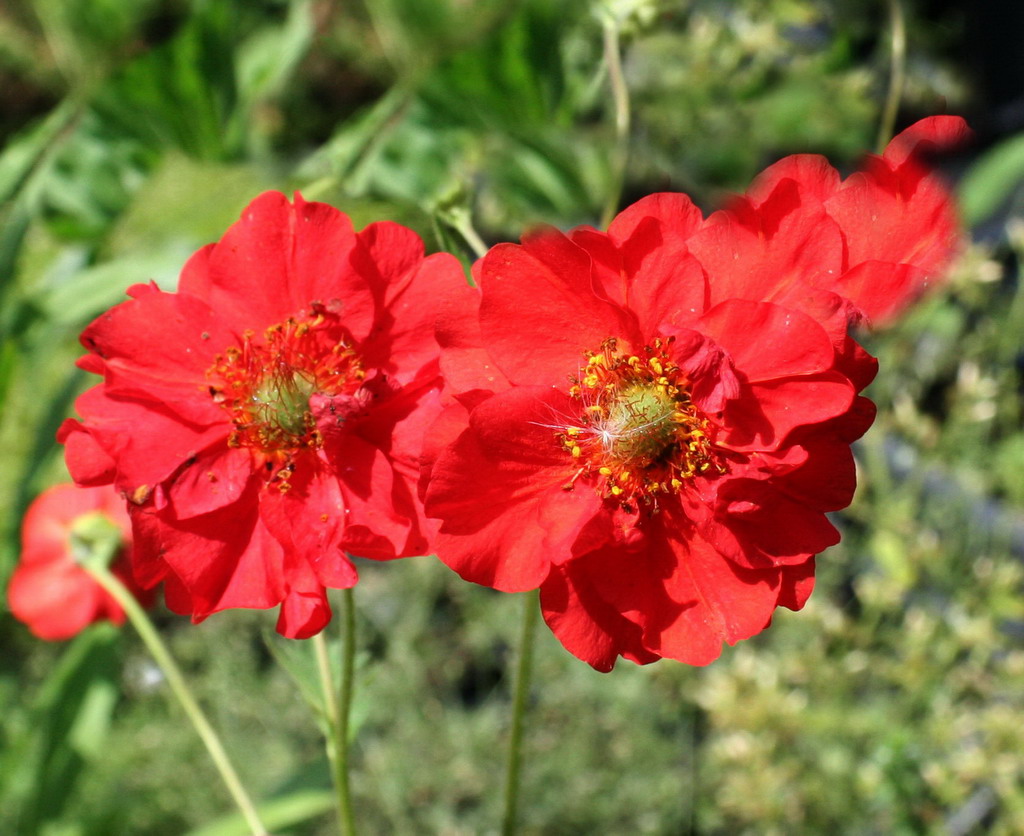Did you know that fall is the best time to plant many wildflower and flower seeds for next spring? It’s true – if you want a beautiful patch of flowers for their scent, color or to attract pollinators, the best time to plant them is not next spring, but very soon – this fall.
Most wildflowers can (and should) be planted in the fall or early spring throughout many regions of the U.S. In the Southern and Western areas of the country the fall months of September through December are the most favorable time to plant wildflower seeds. In Northern and Northeastern regions seeds planted in the fall will remain dormant over the winter. Many varieties will quickly germinate in order to allow the seedling enough time to become established before going dormant for winter. Other varieties will just remain dormant within the soil until early spring. They will germinate and emerge in the spring when the conditions are favorable.
In the wild, as wildflowers bloom and ripen into seed all summer and into fall, the seed simply falls to the ground and is "planted". Of course, in general, Mother Nature has unlimited wildflower seeds to sow. In the wild all kinds of things happen; Seed falls on rocks, on other plants, etc., and never reaches the soil. This is the price a wild-sown seed pays, and billions are lost each fall.
When a wildflower gardener tries to emulate this process, we do all we can to "help nature along." That means, we clear the area, open the ground, provide good seed-to-soil contact for every seed, water if necessary, and do anything else to assure our seeding's success. It's easy and the work is the same as required for a spring planting. In fact, some people think fall planting is easier.
1. Fall Planting Results in Earlier Blooms
Like fall-seeded lawns, fall-planted wildflower seed has a chance to "settle" into your site during the winter, and is ready to burst into growth in early spring. This is why fall-planted wildflower seed is up and in bloom about two weeks earlier than spring-planted seed.
2. There is More Time to Plant in Fall
 Every fall-planting advocate mentions it. In the fall, the gardener has far more time to get work done for two reasons. First of all, there is a longer period and far more "good days" for planting in the fall than during the tricky weather in spring. Secondly, the gardener always has more time during the fall than during the spring rush to get everything done after winter. (Many wildgardeners combine wildflower seed planting with fall bulb planting, and that's always a good idea. The times for both are identical.)
Every fall-planting advocate mentions it. In the fall, the gardener has far more time to get work done for two reasons. First of all, there is a longer period and far more "good days" for planting in the fall than during the tricky weather in spring. Secondly, the gardener always has more time during the fall than during the spring rush to get everything done after winter. (Many wildgardeners combine wildflower seed planting with fall bulb planting, and that's always a good idea. The times for both are identical.)
3. Easier Weed Control
With a fall planting, the weeds that do grow up in your flowers are easily removed when they appear as small plants along with your wildflower seedlings in spring.
How To Plant Wildflowers in the Fall
The actual planting of your seed in fall is the same as it is in spring, except the weather is usually better and you can choose the time.
- Choose your site and best planting time. Full sun is best, and a "border area" between lawn and woods or a more natural area is perfect. Planting should be done AFTER a killing frost in your area, or after you're quite sure the growing season has ended, and your seed won't sprout until spring. In heavy winter areas, that means from late September or October up until the ground freezes. (If you don't have much frost in your area, you should plant just before your rainiest season begins. South Florida plants annuals in the fall for winter bloom. Coastal areas on the Pacific can plant anytime during the late fall or winter.)
- Clear the ground of existing growth (grass, weeds, roots, other plants in the area.) For small areas, this means turning the soil with a shovel, and then removing all the old growth. For larger areas, most wild gardeners use a rototiller. (If you don't own one, rental stores have them, or your local landscaper will be happy to help you.) If you till, till just deep enough to remove the old growth. Deep tilling tends to bring up more weed seed into the surface soil.
![partialshademix1[1] partialshademix1[1]](//lh3.googleusercontent.com/-qICpITyxFH4/Vgh-YB6TvTI/AAAAAAAAlu4/EV77AdGisYY/partialshademix1%25255B1%25255D_thumb.jpg?imgmax=800)
- Spread the seed evenly over the bare soil. The best way to be sure it's even is to split your wildflower seed into two roughly equal parts in two buckets or cans. Then add a quantity of white builders sand (Use the clean sand used in children's' sandboxes) to each bucket and mix the seed well with the sand. Then take your first bucket of sand/seed mix, and hand-broadcast it evenly over your entire prepared site. Next, take the second half and do the same, walking in the reverse direction. This makes it almost impossible to leave bare spots in your seeding, and assures even distribution of the various wildflowers in the mix you're planting. The white sand not only makes the seed easier to sow, but it also shows up on the dirt, to show you "where you've been."
- Don't cover the seed, just compress the whole area. Once your seed is sown, it's important to "squash" the seed into the loose, bare soil. To do this for small areas, just walk over it, and your footprints will do it. Just make sure you compress the entire area. (Kids love to help with this.) For medium sized areas, we often lay down a piece of plywood, and jump on it. For larger areas, a lawn roller is the best. Even without being filled with water, they do a perfect job of "putting your seeding to bed for the winter."
- That's it. Do not cover, and forget the birds if they arrive. Once your seed is compressed on the surface of the soil, you're finished. Do not cover it, Do not rake it. Leave peat moss and especially hay OUT of this project. They're not needed. In fact, even though hay is sometimes put on newly-seeded lawns, don't do that to your wildflowers. Hay is full of weed seed, and remember, you're not going to mow what comes up here, as you would a lawn. If you've planted a slope, you can put down WEED-FREE straw if you can get it to prevent erosion during the winter. But if you've compressed the soil well, most inclined sites will be just fine through the winter.
Birds may arrive and begin pecking at (yes, eating) your seed. It that happens, don't worry. It almost always happens to our plantings, and even if it's a flock, they are never able to eat enough to put a dent in the meadow results.
What to Expect in Spring
 When the weather warms in spring, you'll notice your seed sprouting early, just like fall-planted grass seed. Usually, you won't have to water, since spring weather is almost always wet enough. But if you suddenly see your little seedling area dry out, water immediately. No matter when you plant, your wildflower plants are the most vulnerable when they're very young.
When the weather warms in spring, you'll notice your seed sprouting early, just like fall-planted grass seed. Usually, you won't have to water, since spring weather is almost always wet enough. But if you suddenly see your little seedling area dry out, water immediately. No matter when you plant, your wildflower plants are the most vulnerable when they're very young.
Normally, they'll be just fine and bloom should begin in as little as 5 weeks after you see the first seedlings. (Some wildflowers bloom very quickly.) Pull unwanted weeds as they appear, and as the spring and summer weeks go by, you'll see more and more species, and more and more color appear in your meadow. By July, you'll be taking in armloads of cut flowers, and giving bouquets to friends. That's the great joy of a wildflower planting.
Information retrieved from these sites:
http://www.underwoodgardens.com/slide-gardening-tips
http://www.americanmeadows.com/fall-planting-is-best


















![partialshademix1[1] partialshademix1[1]](http://lh3.googleusercontent.com/-qICpITyxFH4/Vgh-YB6TvTI/AAAAAAAAlu4/EV77AdGisYY/partialshademix1%25255B1%25255D_thumb.jpg?imgmax=800)






























































